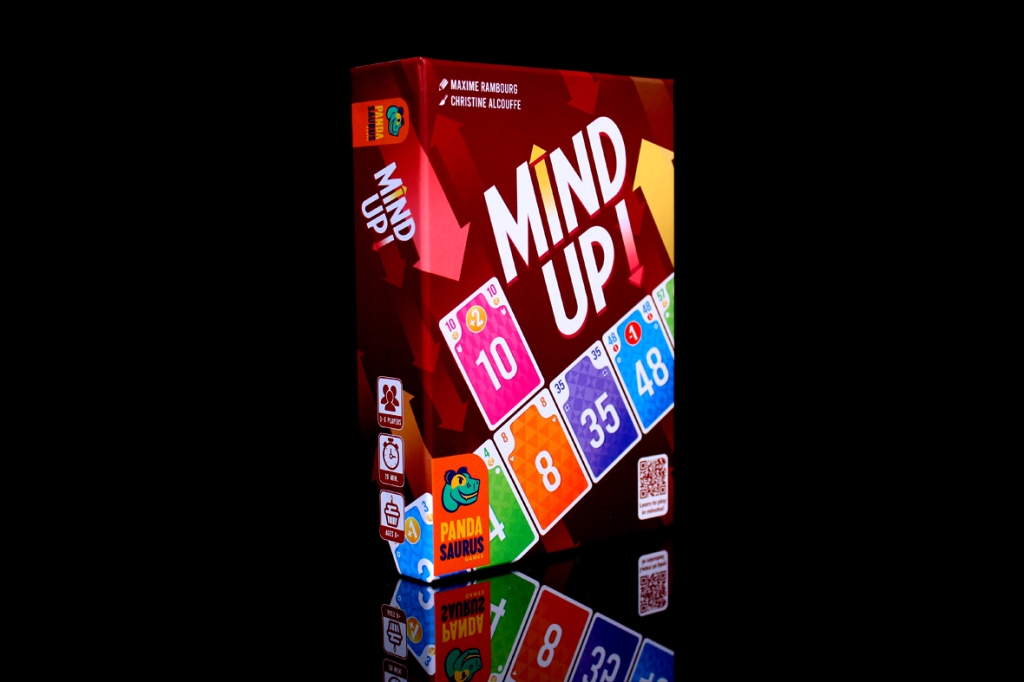
Base price: $15.
3 – 6 players.
Play time: 15 – 20 minutes.
BGG Link
Buy on Amazon (via What’s Eric Playing?)
Logged plays: 3
Full disclosure: A review copy of Mind Up! was provided by Pandasaurus Games.
It might make me a bit of a bad person, but I love working on my reviews while I watch a bit of TV or a movie. Tonight’s movie night, so we’re running through Clue, then X-Men ’97, and then Logan Lucky. It’s an eclectic mix, so it’s usually the right vibe to write my reviews. They’re an eclectic mix, too. But here we go! On the docket is Mind Up!, a new card game from Pandasaurus Games.
In Mind Up!, players are playing a pretty simple game: you want as many high-value cards as possible. The problem is, you can’t just choose what you want. You pick a card and then everyone else does too, and then you get what you get, high to low. So you’ll have to be smart and play carefully if you want to get the cards you need to score the most points and win. Who can pull off the high score?
Contents
Setup
Almost none, here, which is always nice. Shuffle the number cards:

Deal each player seven. Also give each player a set of five Scoring Cards:
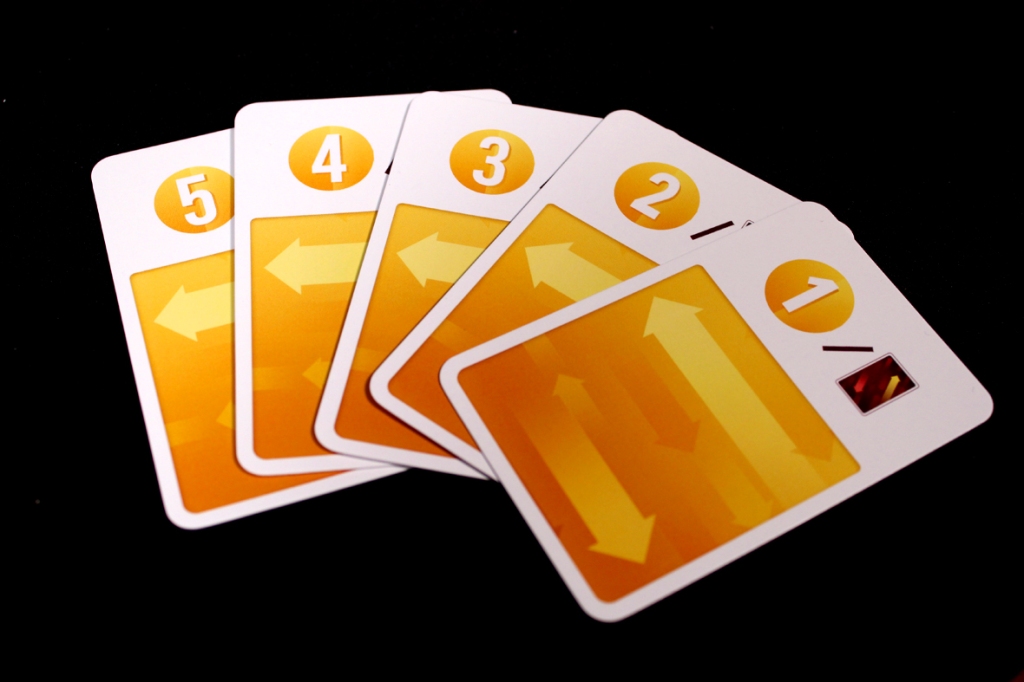
One player shuffles the Scoring Cards and places them in a row. Every other player matches that configuration. If you’re looking to change things up a bit, also shuffle the Bonus Cards and reveal up to five, making sure no two have the same letter on them.
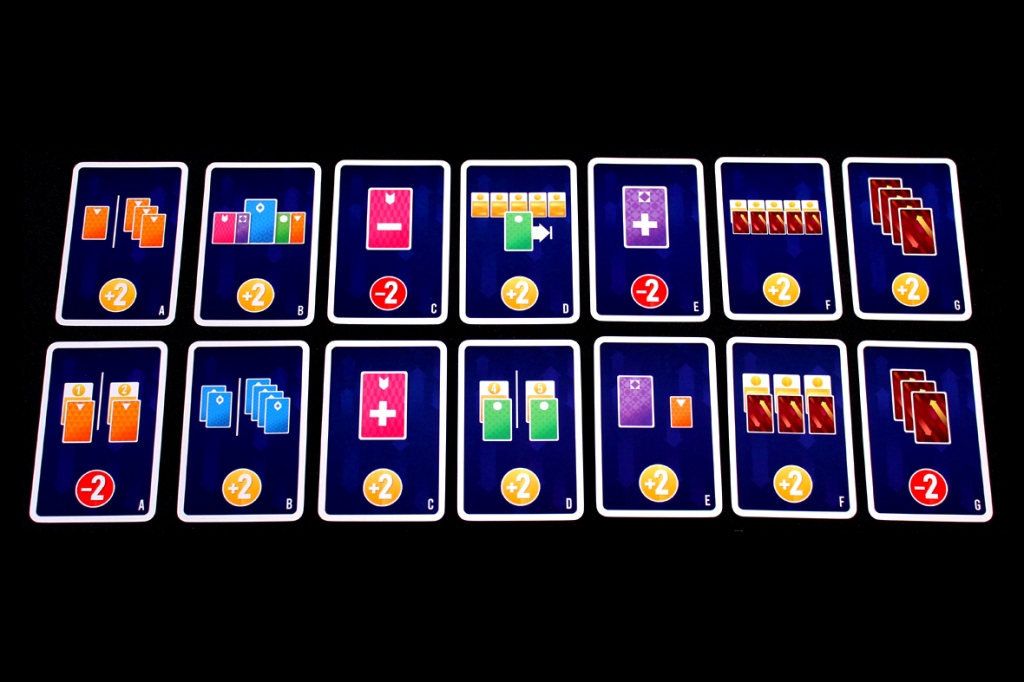
You should be ready to start!
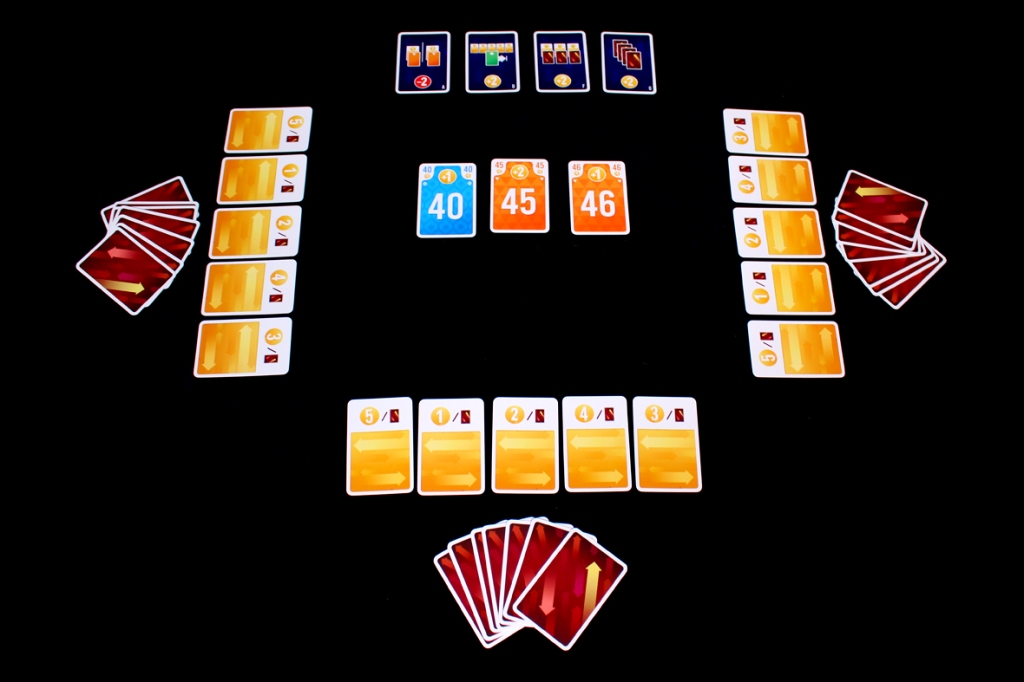
Gameplay
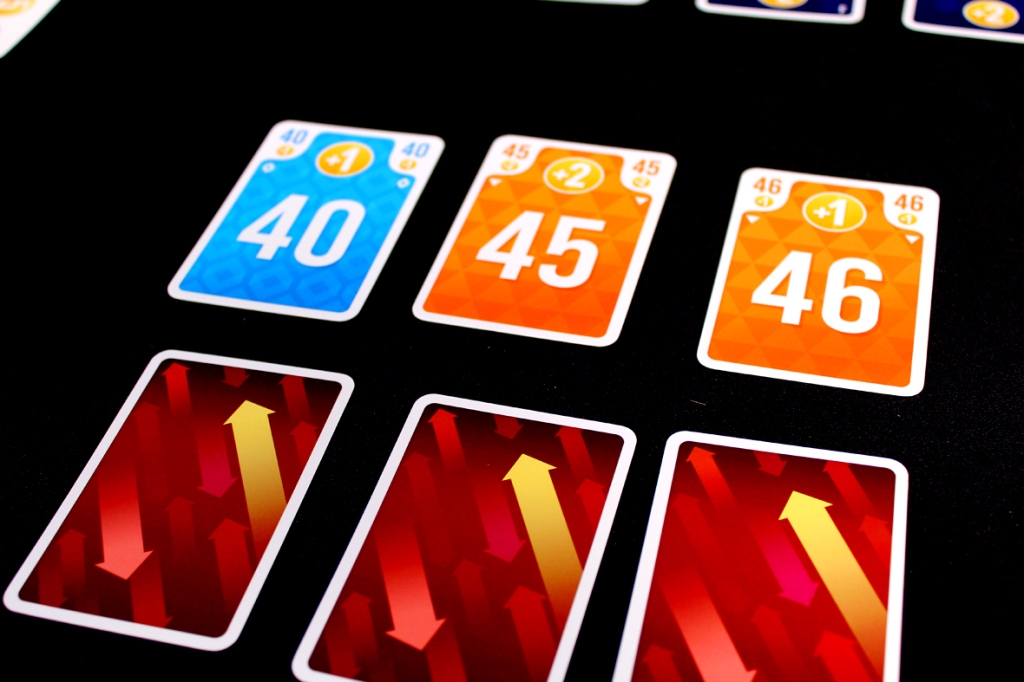
This one’s pretty short too! Each round, your goal is to get cards to earn points. How you earn points, though; that’s what can be kind of tough.
To start a round, reveal one card per player from the deck, putting them in order from lowest to highest, and make sure each player has seven cards in hand. If you’re only playing with one or two Objective Cards, reveal new ones. If you’re playing with three or more Objective Cards, you keep them in.
On a given turn, all players play a card from their hand at the same time, face-down. Once they do, they reveal them! The player who played the lowest card gets the lowest card, and so on up to the highest card. That’s … kind of it, honestly. You organize the just-played cards from lowest to highest, and then you go again. When you take a card, you place it on the column of cards that matches its color. If a matching column doesn’t exist yet, place it in the left-most free column.
Continue playing cards until each player has one card left, and then the round’s over! Instead of drawing new cards, you just take the cards from your Scoring Area and draw an extra card to start the next round, and reshuffle the Scoring Cards.

The player with the most points after three rounds wins!
Player Count Differences
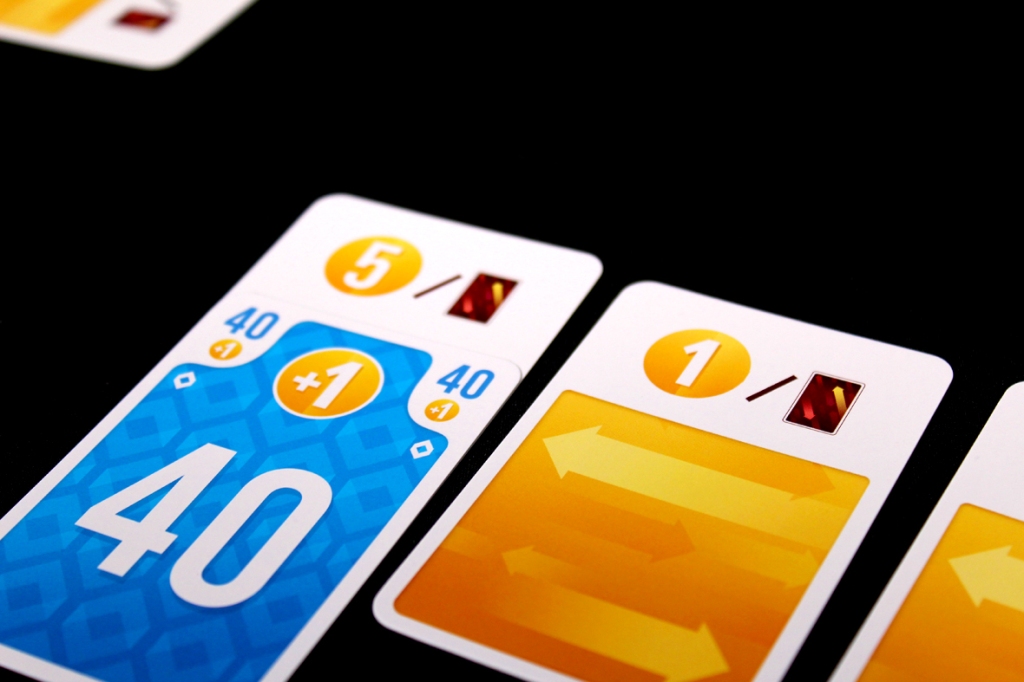
It’s higher chaos when it comes to increasing player counts with this one. At three, you’re either low, middle, or high; with more players, it’s much harder to figure out exactly where you’re going to end up. This has some network effects where it’s a bit harder to track what Objective Cards you’re going to end up with in a similar situation. This makes me want to lean a bit more on fewer Objective Cards per round with more players (since they will then swap out each round). It’s a short enough card game, though; your tolerance for variance should just increase with player count. I do kind of prefer the game at three or four, as a result. I tend to go more for party games with five or more players.
Strategy
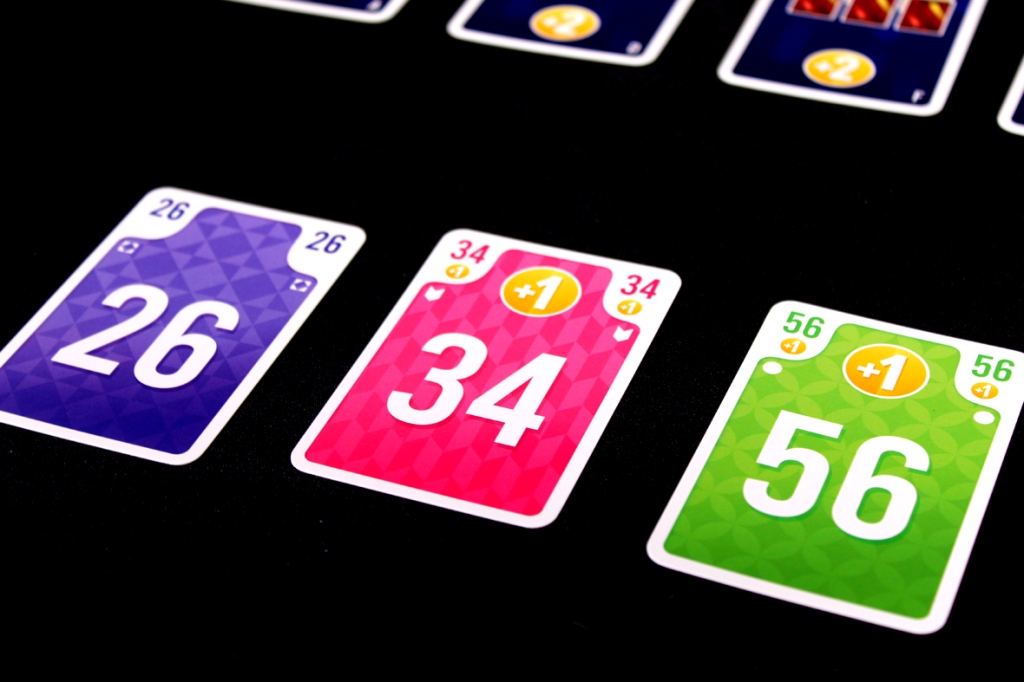
- It’s hard to be extremely strategic if you have no idea what your opponent is going to play. You can play your absolute lowest card, but if your opponent has a lower card, there’s only so much you can do about it. This means you need to know a bit more about what your opponent is planning on playing, no? Keep an eye on what cards they already have in their scoring zone; they’ll likely shoot for cards that keep them gaining 4 / 5 points. If you know what they want, you can either try to deny them or you can go for something else. Either works!
- Naturally, going after the cards that give you the most points would be ideal. This isn’t really much to say from a strategy perspective as much as it is just … kind of how games work. Your goal is generally to score the most points so, score the most points.
- You can influence what’s going to be available next round with the cards you play; is that more important than determining what you’re going to take? It’s a bit of both, honestly. You can play cards that you want to get later, and you can try and play cards so that you can get the cards that you want to take. It works! But figure out which you want to prioritize for any given round.
- Keep an eye on the Objectives if you’re playing with them. They can really switch things up if you’re not careful. Certain Objectives can really punish you for taking certain cards, which obviously affects the calculus of what cards you want. That said, some of them are really helpful, so they’ll make certain cards or certain colors more desirable! Though it may not always be the same cards and colors.
Pros, Mehs, and Cons
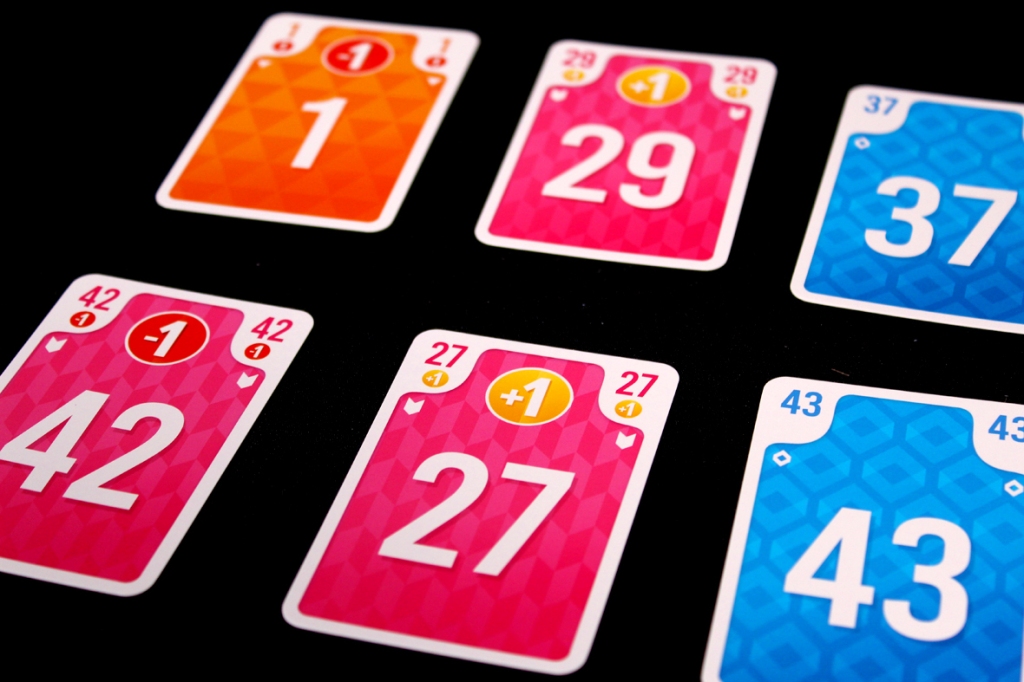
Pros
- I do love a portable card game with simple rules. They don’t necessarily always have staying power, but they’re fun to learn and they make an exciting romp every now and then.
- I think the differing Objective rules based on the number of cards you have in play is nifty. You can add strategic play (five cards that stay the same over three rounds) or more tactical play (one or two cards that change every round). That’s a nice bit of flexibility!
- Having the cards worth extra points is a neat little trick, too. It throws a bit of a wrench in a consistent playstyle, I suppose. You don’t necessarily always want the same card color if there’s a -2 on one and you can get 4 points from another, so it forces players to change it up.
- Simultaneous play keeps things moving relatively fast. It’s not only faster, but also makes sense here. Everyone playing at the same time makes who gets what card more functionally random. I mean, the game wouldn’t work if you didn’t play at the same time.
- It’s also wise that they double-code the cards so they’re not just color-coded. They’ve got symbols on them! You love to see it. Very accessible.
Mehs
- If we’re going to keep score each round, it would have been nice to have a scoring pad of some kind. I just hate having to provide my own scratch sheet if I’m not expecting it, so I’m telling you now in the hopes that it doesn’t come as a surprise.
Cons
- Another one of those games where you just kind of play three rounds to amortize out some of the randomness. It makes the game feel a bit longer than it needs to be, at times, though it’s alleviated somewhat by having the Objective Cards persist between rounds (provided you’re using at least three).
Overall: 7 / 10
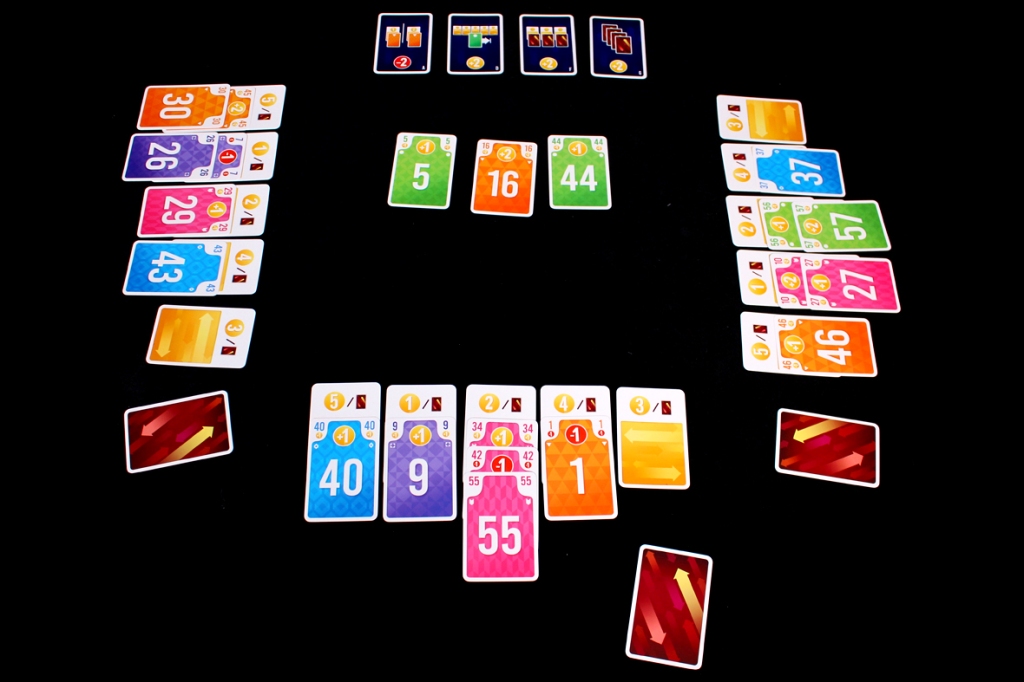
Overall, Mind Up! is pleasant. It’s a cute, quick, and enjoyable little card game. The main hook, here, is the turn-to-turn volatility where the cards you “bid” to get cards from the center become the cards you’re bidding on in the next turn. That’s all well and good if you have the cards to set yourself up (consistently going low or high can be nice), but if you’re playing with a wide variety of cards it may often feel like you don’t have a ton of control over how each round is going, especially at high player counts. With a short game, though, that’s not a huge issue, so Mind Up! fits very nicely into that larger group of quick and simple card games that you can bring in a bag or play at the bar or something. I’m not quite sure it does enough to be especially memorable beyond that, though I do like the color scheme. If you’re looking for another quick card game to try, though, or you enjoy trying to predict your opponents’ actions, you’ll likely enjoy Mind Up! It’s pleasantly fun.
If you enjoyed this review and would like to support What’s Eric Playing? in the future, please check out my Patreon. Thanks for reading!